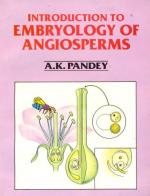|
This section contains 333 words (approx. 2 pages at 300 words per page) |
Angiosperms
Angiosperms utilize stomata to obtain nutrients from the environment. Plants carry on photosynthesis by combining ingredients in their leaves. These ingredients include carbon dioxide, water, and sunlight. The stomata are the way in which carbon dioxide, light, and water is transferred from the surrounding atmosphere into the plant to form food. Some of the jobs of the roots of angiosperms are to absorb water and minerals from the ground and store food for the plant. Within the roots are areas that store food and the xylem and phloem that take in water and minerals up to the leaves and bring food manufactured back down for nourishment and storage. Tiny root hairs maximize the water and minerals that the root can absorb.
Angiosperms are helped in their intake of nutrients by fungi and bacteria. They share a symbiotic relationship called mutualism. Bacteria that are in root nodules of legumes convert gaseous nitrogen to forms useful in the growth of plants. This process of converting atmospheric nitrogen to ammonium is called nitrogen fixation. Mycorrihazae, which are fungi growing around plant roots, help in absorbing minerals that are supplied to the plant in exchange for sugars. This symbiotic relationship is also an example of mutualism.
|
This section contains 333 words (approx. 2 pages at 300 words per page) |


